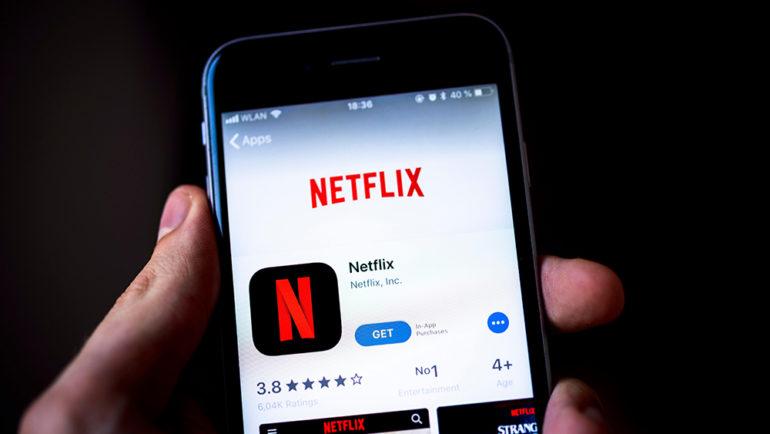Netflix Q4 Preview: Price Hike Signals Strong Year-End Quarter
By Todd Spangler
LOS ANGELES (Variety.com) – Netflix is feeling its oats with a price hike across all streaming plans in the U.S.: Coming just two days before it reports fourth-quarter 2018 results, the timing of the fee increases may indicate the company will report a big beat on Q4 expectations.
The streamer is scheduled to report earnings on Thursday, Jan. 17, after market close. Wall Street analysts expects to report $4.21 billion in revenue and earnings per share of 24 cents for Q4 (in line with the company’s previous guidance of $4.20 billion in sales and EPS of 23 cents).
Netflix’s guidance was for U.S. net additions of 1.5 million paid streaming subscribers and 6.1 million international paid subs in Q4. Analysts had been expecting subscriber adds to be in line or slightly ahead of those numbers, but those estimates mostly came before news of the company’s biggest price hike ever — under which Netflix’s Standard plan with two HD streams rises 18%, to $12.99 per month, for customers in the U.S. and parts of Latin America.
Investors read the tea leaves on the higher pricing as evidence of Netflix’s growing subscriber momentum and pricing power, pushing the stock up 6.5% Tuesday (although shares are down slightly, by -0.8%, in midday trading Wednesday). “We view the read-through [on the price increase] as positive as it relates to the company’s confidence in the content slate and subscriber trajectory in 2019,” SunTrust Robinson Humphrey analysts wrote in a note Tuesday.
That said, Wall Street is expecting Netflix to issue more cautious guidance for the first quarter of 2019, to reflect the headwinds that the price increases will likely put on subscriber growth.
But on balance, analysts were generally positive on the pricing move, as it’s expected to add around $1 billion in revenue for 2019 in the U.S. alone. That also moderated concerns about Netflix’s cash burn (and need to raise debt), per RBC Capital Markets’ Mark Mahaney. “We believe this [pricing] action has a high probability of success, further fueling the Netflix flywheel,” Mahaney wrote in a note. “The simple point here is that this price increase – if successfully implemented – can generate a material boost to NFLX’s profitability… and/or help cover its cash content costs,” which RBC estimates will come in at around $14 billion in 2019.
Apart from whatever the price increase means relative to Netflix’s Q4 results, analysts have been upbeat on what has historically been the company’s biggest quarter for customer gains. Several zeroed in on Netflix’s rare viewership-data disclosure that 45 million member accounts watched at least 70% of “Bird Box,” the dystopian/sci-fi thriller starring Sandra Bullock, in the first week. The claim that “Bird Box” was a huge hit was later backed up by Nielsen data .
“We think that the unusually high activity [for ‘Bird Box’] depressed churn, leading to upside to both domestic and international subscriber additions, and we think that our Q4 subscriber estimates may prove to be conservative,” Wedbush Securities analyst Michael Pachter wrote in a note Tuesday. However, the analyst — who is bearish on Netflix’s stock and believes the company is overvalued — also suggested the price hikes could depress Netflix’s domestic sub growth in 2019 .
Netflix released a record-high 781 hours of original content on the U.S. in the fourth quarter, up 88% year over year, according to an analysis by Cowen & Co.’s John Blackledge. The “increasingly robust originals slate” has reinforced Netflix’s pole position in the living room: Per Cowen’s proprietary survey of 2,500 U.S. consumers in December 2018, Netflix was again the No. 1 choice when asked which platforms they use most often to view video content on TV — with 27% of total respondents — followed by basic cable (around 20%), broadcast TV (18%) and YouTube (12%).
In another positive sign, according to BMO Capital Markets analyst Dan Salmon, Netflix in late 2018 ended the ability for customers to sign up via its mobile app on Apple’s App Store, after discontinuing in-app signups through Google Play earlier in the year. That eliminates the revenue-share split it pays to Apple and Google for new subscribers.
About the App Store change, Salmon wrote in a note Monday, “We are positive both on its impact on margins and the confidence it suggests in subscriber trends after the international tests (albeit where Apple has a lower penetration vs domestically).”

